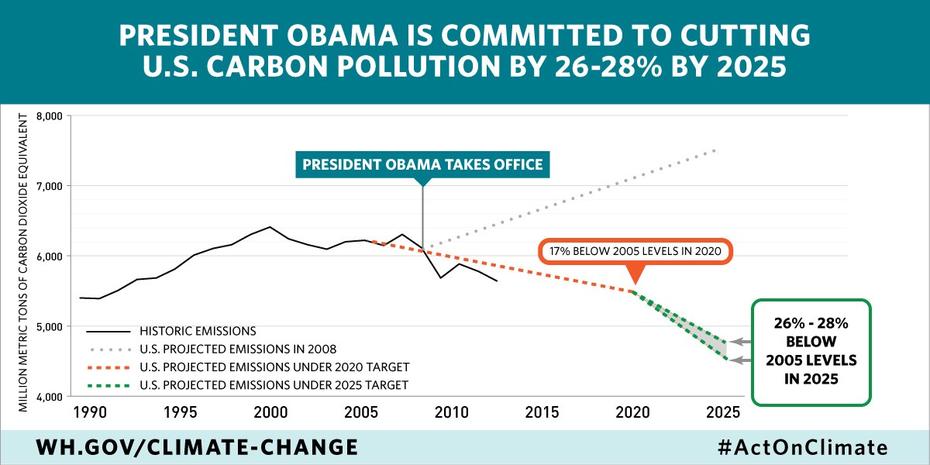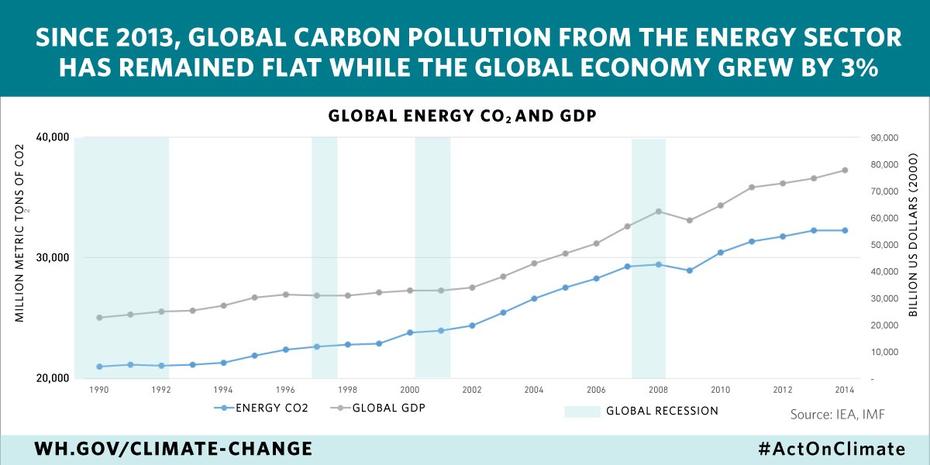The United States made its 2025 carbon emissions target official last week, committing to a 26 percent to 28 percent reduction below 2005 levels. These numbers aren’t exactly news. They were part of a bilateral agreement with China last fall. But President Obama’s announcement is intended to spur other nations to make their emissions pledges—like, now.
At the December climate conference in Lima, Peru, negotiators promised that their countries would submit carbon emissions pledges by March 31, in preparation for November’s United Nations climate conference in Paris. The deadline was last week, but only a few countries appear to be taking it seriously. Mexico, the European Union, Switzerland, and Norway have also recently made their pledges public, and China made a vague commitment in November, promising to reach peak emissions by 2030. What other countries have announced emissions targets? Let me see here … [rustling papers] … oh, right: none of them.
Although the Paris conference is still eight months away, collecting commitments now is critically important.
The situation is disheartening, but let’s focus on a few bright spots. The Mexican government produced a detailed and achievable target. It promised to reach peak emissions by 2026, which is a slightly more aggressive goal than China’s. Our neighbors to the south also committed to emit 22 percent less carbon in 2030 compared to a business-as-usual baseline. Past business-as-usual pledges have been smokescreens, because countries like South Africa and Indonesia refused to define what constituted as “usual.” Mexico, however, gave a specific forecast, which makes the commitment measurable.
As the world’s second-biggest carbon polluter, the U.S. emits about 10 times as much greenhouse gas as Mexico, but Mexico’s pledge could be the more significant of the two. A persistent complaint about the climate change negotiation process is that it favors a handful of rich nations. For instance, small island states say the focus on a two-degree maximum temperature increase would likely submerge entire countries. Developing countries complain that the Green Climate Fund, which was supposed to provide money for them to transition to green energy, is badly underfunded. Fast-growing economies say they shouldn’t have to slow their development because the U.S. and Europe already used up the global carbon budget. Mexico’s participation may help persuade other developing countries that the process can work for them. The move is in line with the Mexican government’s recent efforts to take a leadership position in Latin America and the Caribbean. Mexico’s commitment may also help shame larger economies, like Russia and Japan, into action.
What might be most significant about the U.S. commitment is that it details how we plan to achieve our carbon pollution goals through existing programs like the fuel economy standards for cars and trucks and upcoming rules to limit greenhouse gases from power plants. Such specifics will hopefully deter other countries from making empty or unverifiable promises.

Although the Paris conference is still eight months away, collecting commitments now is critically important. Negotiators need time to review the pledges to see whether they are specific and measurable, and scientists need time to determine whether or not they will actually work. If the commitments don’t put us on a trajectory to prevent damaging levels of warming, we’ll need to make them stronger.
Hans Joachim Schellnhuber, director of the Potsdam Institute for Climate Impact Research, calls the difference between two and four degrees of temperature rise “human civilization.” So this is no ordinary deadline. It’s time for the world’s governments to turn in their homework. Now.

This post originally appeared on Earthwire as “The Dog Ate My Emissions Target” and is republished here under a Creative Commons license.





